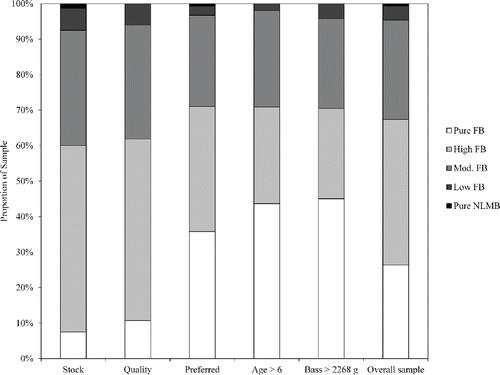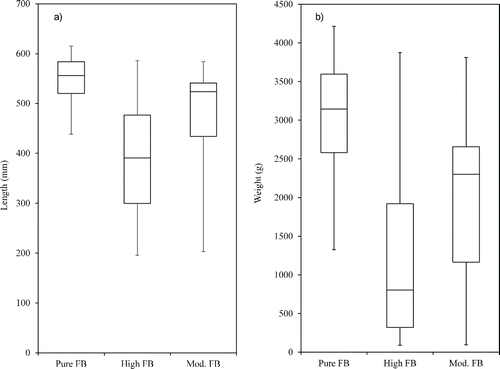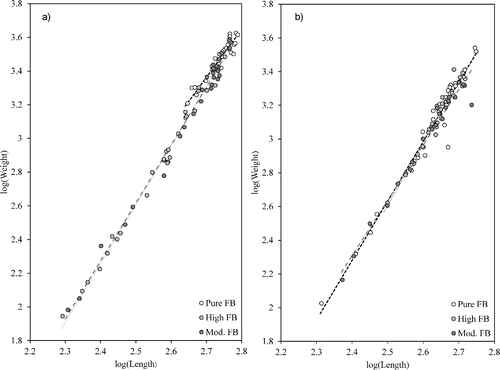Figures & data
Table 1. Lake characteristics and stocking information for each reservoir up to the final year of sampling. Lake Chicot is a natural oxbow of the Mississippi River. Number of stocking events (in parentheses) and total density of fish stocked rounded to the nearest whole number (number of fingerlings stocked/ha). Some yearlings were also stocked in Columbia and Lower White Oak lakes.
Figure 1. Lakes Millwood (n = 232), Lower White Oak (n = 296), Monticello (n = 478), Erling (n = 356), Columbia (n = 341), and Chicot (n = 436) in southern Arkansas. Pie charts display proportions of each genetic group for all sampled bass.
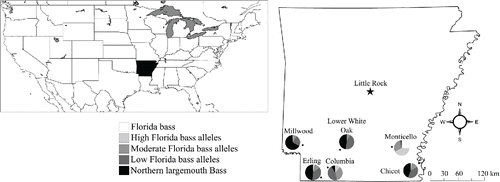
Figure 2. Frequency of bass genetic groups (FB, high, moderate, and low levels of FB alleles, and NLMB) for stock size or greater bass from Lakes Chicot (n = 423), Columbia (n = 294), Erling (n = 284), Lower White Oak (n = 246), Millwood (n = 273), and Monticello (n = 471).
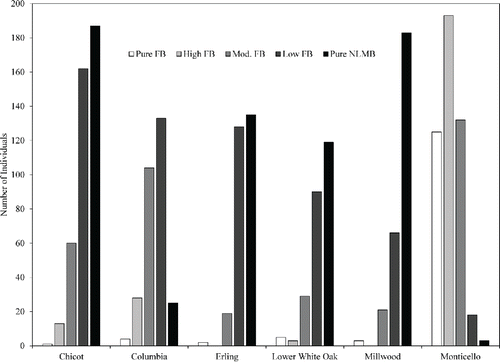
Table 2. Sample years, sample size, and admixture proportions of each largemouth bass population for Florida bass (FB) and northern largemouth bass (NLMB). Joe Hogan and William Donham hatcheries provided NLMB for stocking and Andrew Hulsey hatchery produced FB for stocking.
Table 3. PERMANOVA results comparing log transformed length (mm) and weight (g) between largemouth bass genetic groups classified by q-value (1 = ≤0.05, 2 = 0.051–0.350, 3 = 0.351–0.650, 4 = 0.651–0.949, 5 = ≥0.95) as determined by STRUCTURE for individual reservoir bass populations. The genetic groups included in the test are given. P-values are based on 9999 permutations. N/A = Not applicable.
Table 4. Results of the pANCOVA models for log(Weight)∼log(Length) × Genetic Group within reservoirs. P-values are based on 9999 randomizations.
Figure 3. Linear regressions of log(Weight) × log(Length) for a) Lake Chicot (n = 433) and b) Lake Millwood (n = 296) bass.
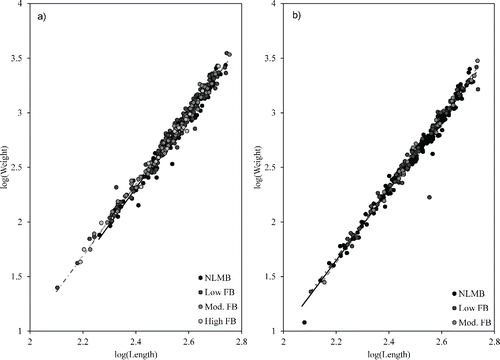
Figure 4. Distribution of bass genetic groups within Lake Monticello for stock size (n = 80), quality size (n = 84), preferred size (n = 307), age >6 (n = 103), bass >2,268 g (n = 71), and overall (n = 478).
